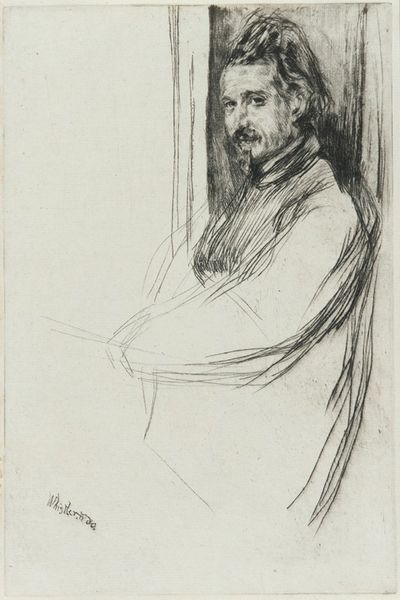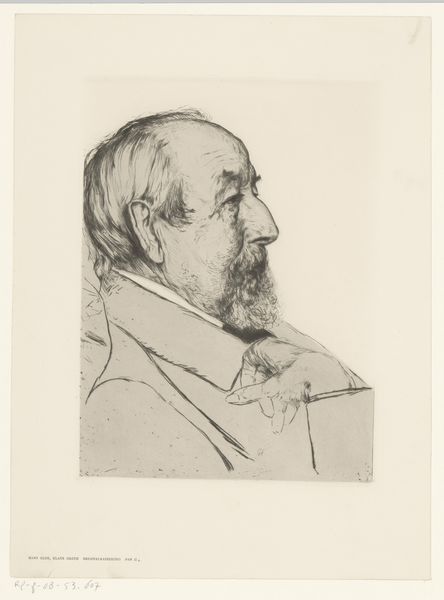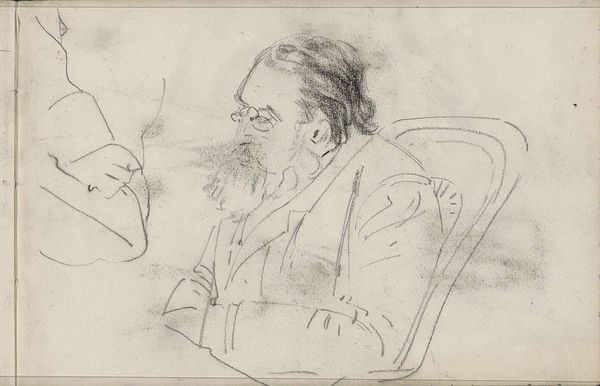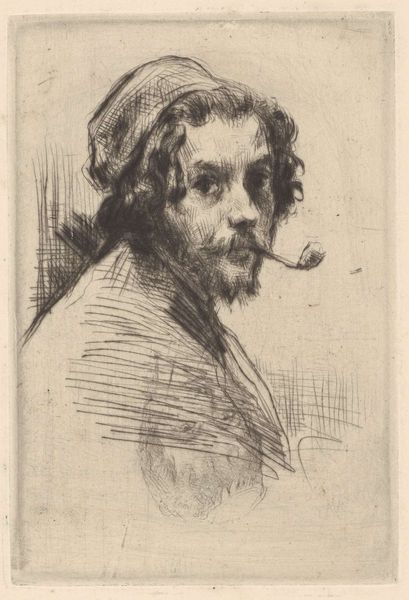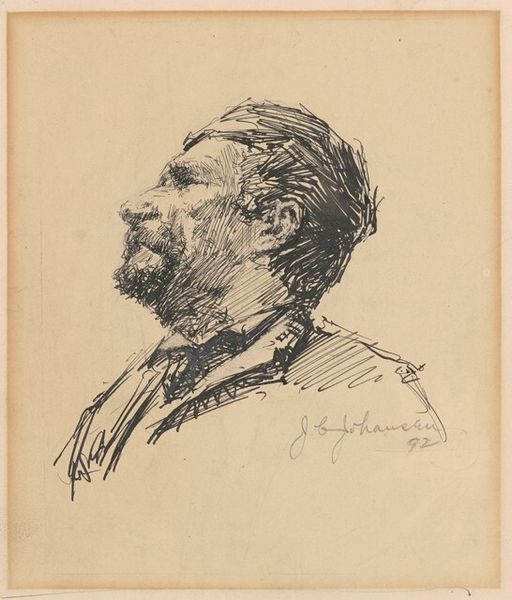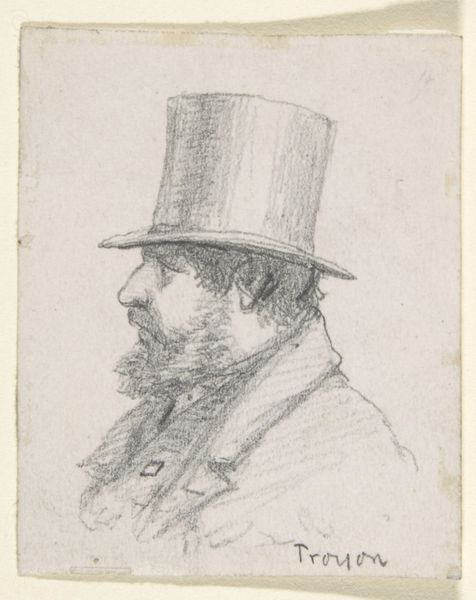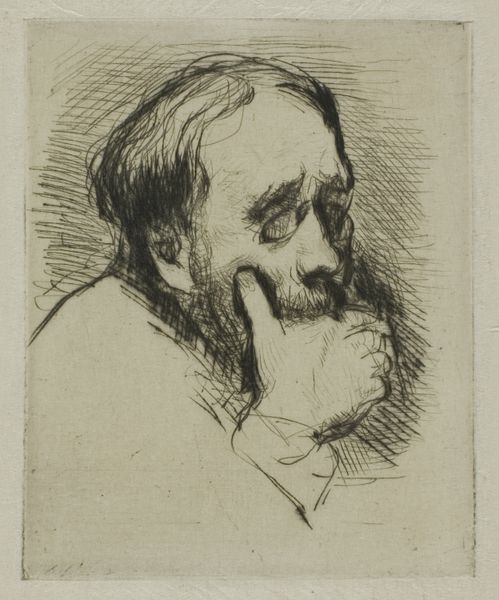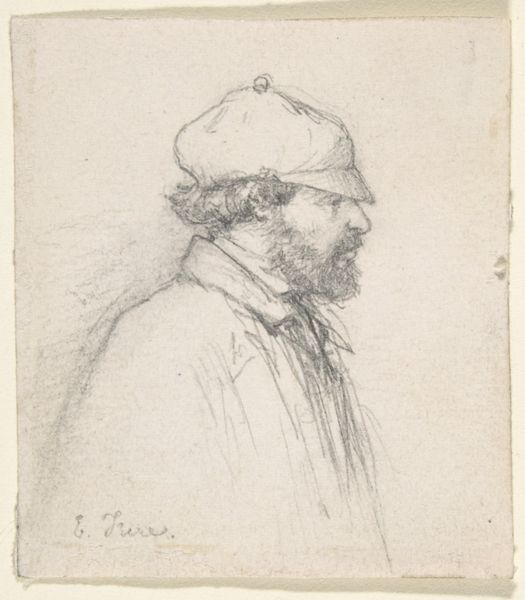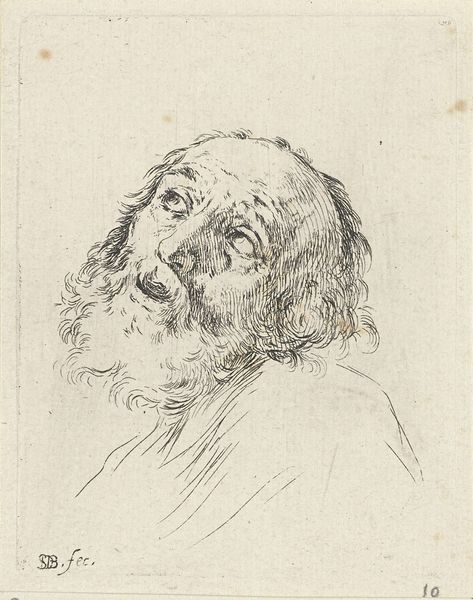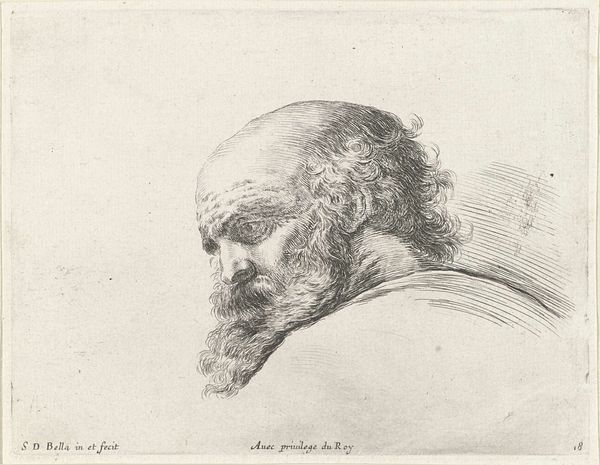
drawing, ink, pen
#
portrait
#
drawing
#
light pencil work
#
ink drawing
#
impressionism
#
pen illustration
#
pen sketch
#
pencil sketch
#
personal sketchbook
#
ink
#
ink drawing experimentation
#
pen-ink sketch
#
sketchbook drawing
#
pen
#
sketchbook art
Dimensions: height 167 mm, width 98 mm
Copyright: Rijks Museum: Open Domain
Curator: Up next, we have "Krantlezende heer" or "Gentleman Reading a Newspaper" possibly created between 1880 and 1884, by Giuseppe de Nittis. The medium seems to be primarily pen and ink. Editor: Immediately, I'm struck by the intimacy of this piece. It has a wonderful sketched quality, almost like a glimpse into the artist's private sketchbook. It feels very immediate and raw. Curator: Absolutely, its loose and rapid strokes evoke a sense of immediacy, mirroring the fleeting moments captured by Impressionists, which De Nittis was associated with, although perhaps more from the Italian context. There's a feeling this isn't a posed formal portrait, but rather a candid observation of everyday life. It's interesting how journalistic his compositions often feel. Editor: Yes, you can really sense that through the materiality, too. It is just a quick sketch done in pen and ink. Probably relatively inexpensive materials which highlight the banality of the subject. The texture of the paper and the slight imperfections in the ink line add so much to the overall character. This isn't about polished perfection, but about capturing a moment, a gesture. Curator: Exactly! Consider how the printing press reshaped public life and fueled a booming market in newspapers, particularly as the cost of production fell. Here, De Nittis subtly comments on the rising culture of mass media and its impact on individual lives, reflecting shifts in literacy, civic engagement, and the spread of information during the late 19th century. Editor: The emphasis isn't on idealized beauty, but on the materiality of daily life and the tools of mass communication like newspapers. The way the pen strokes mimic the quick movements of the man reading speaks to a connection between artist, subject, and the news itself, too. Curator: It gives you pause about who had access to these publications as well and who the art was trying to reach with such a banal and public portrayal. The art world during that time had a burgeoning sense of how artwork shaped and shifted society's viewpoints of the human condition. Editor: It's fascinating how such a seemingly simple drawing can reveal so much about not just the individual, but the rapidly evolving world around him, thanks to accessible materials, of course. Curator: I agree entirely. This piece really offers a window into understanding the intersection of daily life and the rise of mass media during the late 19th century and how they reflected and molded cultural consciousness. Editor: Indeed. It highlights how accessible materials can be utilized for social and political reflection during the expansion of communication and information technologies.
Comments
No comments
Be the first to comment and join the conversation on the ultimate creative platform.
